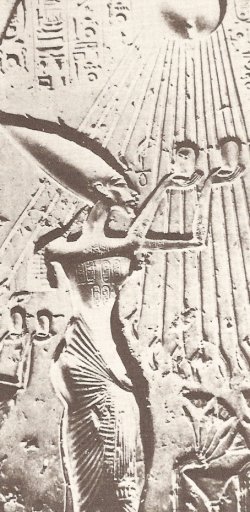Egyptian astronomy

Bas-relief of the Egyptian pharaoh Akhenaton of the Eighteenth Dynasty, about 1350 BC. Image: Cairo Museum.
The ancient Egyptians kept a complicated calendar with two different, mutually shifting years and festivals. They had a 365-day (36 decans: 36 × 10 = 360, plus 5 festival days) calendar for New Year rites and a Sothis (Sirius) calendar of 365¼ days for agriculture (sowing and harvesting), measured by watching the helical rising of Sirius. The latter was called the Canicular Year (Sirius is known as the Dog Star, and canis is Latin for "dog"). The Egyptians knew that the two calendars would be out of step by one year after 1,461 years, known as the Sothic cycle (because 1,460 × 365¼ = 1461 × 365 = 533,265).
In the Egyptian language the word "sky" is feminine. Thus for the Egyptians, unlike most other peoples, the sky was a goddess (Nut or Hathor) represented either as a cow with four hooves planted on Earth or as a woman whose body bends in an arc so that her toes and fingertips touch Earth. She gives birth every day to the Sun, which similarly has different names depending on whether it is the rising Sun (Khepri), the Sun at zenith (Ra), or the setting Sun (Atum). The Moon's various names, Aah, Thoth, and Khons, correspond with its depiction as a dog-headed ape, an ibis, and the left eye of a great celestial hawk. These identifications predate the development of hieroglyphic writing. The oldest megalithic site with an astronomical orientation was found in Nabta in 1998.


